We'll answer all your commonly asked questions about stand up paddle boarding to help you get started on your SUP journey.
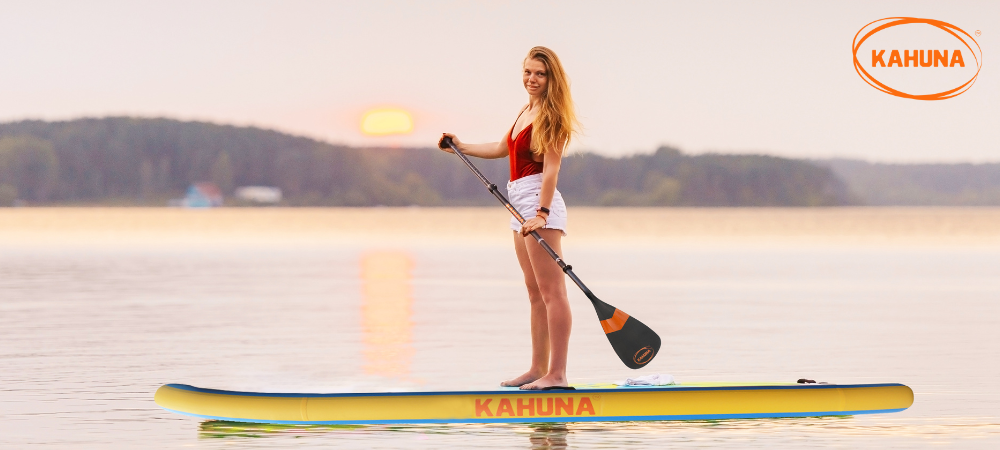
Stand up paddle boarding is quickly becoming one of the most popular water sports around the world. With its easy learning curve, it's no wonder why so many people are giving it a try. But with any new activity, it can be intimidating to get started. That's why we've compiled a list of the most frequently asked questions about stand up paddle boarding. Get ready to jump into the world of SUP and learn all the basics you need to know to get started today!
What is stand up paddle boarding?
Stand up paddle boarding is a sport that involves standing on a board and using a paddle to propel yourself through the water. It’s a great way to explore places that you may not be able to access from land, and it’s also a fun way to stay active.
What do I need to get started?
The most important thing you’ll need is a board. You can rent or buy a board, but if you plan on doing a lot of SUPing, it might be worth investing in your own. You’ll also need a paddle, a personal floatation device (PFD), and a leash that attaches to the board.
You can read here for the ultimate guide to SUP accessories!
What type of board should I buy?
SUP boards come in two varieties: inflatable and hard. Inflatable boards are lightweight and can be easily transported and stored, making them a great choice for those who don't have a lot of storage space. Hard boards are more durable and can handle more abuse, making them a better choice for experienced paddlers. As a beginner, an inflatable board is probably your best bet, as it will be easier to transport and store.
You can also find out more information by reading our inflatable SUPs vs hard paddle boards blog.
What type of paddle should I use?
The type of paddle you choose will depend on your size and the type of paddling you’re doing. Generally, a paddle that’s around 7-8 feet is a good place to start. Beginners may want to consider a paddle with a smaller blade, as it’s easier to handle. You can also buy adjustable paddles, which allow you to customise the length to your preference.
What type of clothing should I wear?
When you’re paddle boarding, you’ll want to wear clothes that are lightweight and quick drying. Board shorts, rash guards and synthetic fabrics are all good options. Avoid wearing cotton, as it can get heavy and uncomfortable when it gets wet.
Do I need to wear a life jacket?
Yes! It’s important to always wear a life jacket when you’re out on the water. Not only will it keep you safe, but it’s also the law in some areas. Make sure you choose a high-quality, safety-tested life jacket that fits you properly.
What safety tips should I follow?
When you’re on the water, always be aware of your surroundings and keep an eye out for other boaters, swimmers, and wildlife. Make sure to check the weather before you go out and be prepared for unexpected conditions. Finally, make sure you have a phone or radio with you in case of an emergency.
We have a blog where we discussed what you should do before and while SUPing as well!
Is stand up paddle boarding difficult to learn?
SUP is relatively easy to learn, but like any other sport, it takes practice. You’ll need to find the right balance between paddling and standing on the board. Once you get the hang of it, you’ll be able to have a lot of fun out on the water.
How long will it take for you to learn stand up paddle boarding?
The amount of time it takes you to learn stand up paddle boarding will depend on several factors, such as your prior experience with water sports, your physical strength and ability, the type of board you use, and the instruction you receive.
If you’re a complete beginner, you can expect to spend a few days to a few weeks learning the basics. You should start by familiarising yourself with the equipment, such as the paddle, board, and leash. You will also need to learn the fundamentals of the sport, such as proper paddling technique and safety. It’ll be helpful to read and learn from informative paddle boarding blogs for beginners as well to get you prepared.
Once you have the basics down, you can start practising in different types of water. For example, if you’re in a lake, you can practise manoeuvring the board and balancing on the water. If you’re in the ocean, you can try to paddle out into the waves and practice riding them.
It’s important to practise regularly and make sure you’re getting proper instruction. You should also make sure to stretch and warm up before you start paddling in order to avoid any injuries. It’s also important to practise with a variety of conditions and in different types of water.
Where can I paddle?
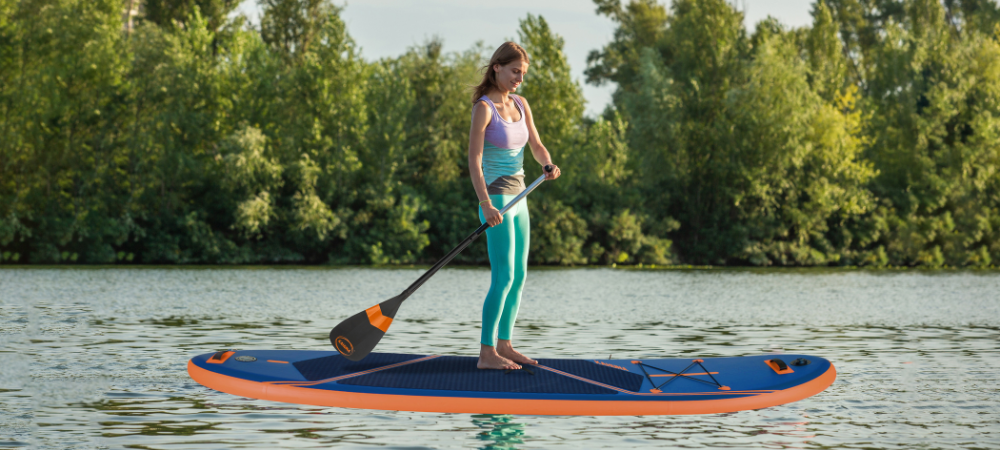
The great thing about paddle boarding is that you can do it just about anywhere there’s a body of water, from oceans and lakes to rivers and streams. Before you start exploring, though, make sure you check the local laws and regulations to ensure you’re following the proper guidelines.
If you want the classic SUP experience, head out to the ocean. The waves and wide open spaces offer a great challenge and plenty of room to explore. Just make sure to take extra safety precautions, as the ocean can be unpredictable.
If it’s flat water you’re after, the lakes, rivers and streams are perfect spots. They’re typically calmer, so you can focus on perfecting your technique without worrying about the waves. Plus, you can find plenty of spots for a picnic or a swim.
If you’re looking for a truly unique paddle boarding experience, head to one of the many man-made reservoirs. They’re often surrounded by forests, making them a great spot to get away from it all. Just make sure you check the local regulations to ensure you’re allowed to paddle on the water.
What are the benefits of stand up paddle boarding?
Excellent form of exercise
It provides a full-body workout that works all the major muscle groups, including the core, arms, legs and back. This low-impact exercise helps to build muscle and burn calories, leading to improved physical fitness and better overall health.
Mental health benefits
In addition to the physical benefits, SUP has numerous mental health benefits. Being outdoors and in nature is proven to reduce stress and improve one’s mental state. Paddle boarding also has a calming effect, as the rhythmic motion of paddling can help to improve focus and concentration.
Provides an opportunity to explore and appreciate nature
SUP also provides an opportunity to explore and appreciate nature. As you paddle through different waterways, you get to take in the beautiful scenery, as well as observe and appreciate all the different wildlife that live in the area.
Great way to socialise and meet new people
Finally, SUP is a great way to socialise and meet new people. There are numerous SUP clubs and events that offer a great way to meet people with similar interests. SUP is also a great way to spend time with friends and family, as it provides a fun way to get outdoors and enjoy the water.
Still not convinced yet? Read our blog so we can tell you more reasons why SUP is really good for you!
How do I find the best stand up paddle board for my needs?
When it comes to finding the best stand up paddle board (SUP) for your needs, the options can be overwhelming. With so many different types, sizes and materials available, it can be hard to know which paddle board is right for you. To make sure you choose the right stand up paddle board, it’s important to consider three key factors: purpose, size and material. Let our beginner SUP buying guide blog help you decide.
Once you’ve considered all three factors, you should have a much better idea of which stand up paddle board is the best choice for your needs. Now all you have to do is find a board that meets your criteria and get out on the water!
How much does an iSUP cost?
The cost of paddle boarding can vary depending on the type of board, accessories, and other factors. A basic inflatable paddle board can range from $350 to $1000, while high-end boards can cost as much as $2000 or more. It’s important to realise that the more expensive boards are usually made of better materials and are designed for more advanced paddlers.
Accessories such as paddles, leashes, and fins can also add to the cost of paddle boarding. Generally, a basic paddle board setup should include a paddle, leash and fins, which can cost around $100.
If you’re looking to buy a new paddle board, don’t forget to factor in taxes, shipping and other costs. Depending on where you live, you may be able to buy a paddle board locally and save money on shipping and taxes. If not, online retailers often have discounts and promotions that can help lower the overall cost.
Can you teach yourself to SUP?
The answer is yes! With some discipline, commitment and a few helpful resources, it's entirely possible to teach yourself to SUP.
Paddle ahead!
There you have it! We hope that these questions have helped you prepare and understand just how fun and exciting this sport is.
So get your paddle board and essential accessories from Kahuna!
Suggested Read: 10 Stand Up Paddle Boarding Tips for Beginners

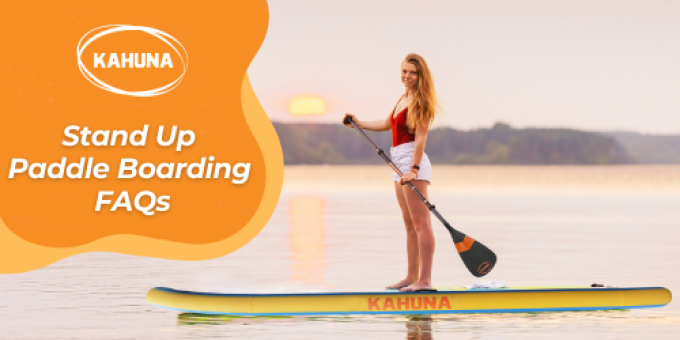



 klika australia
klika australia
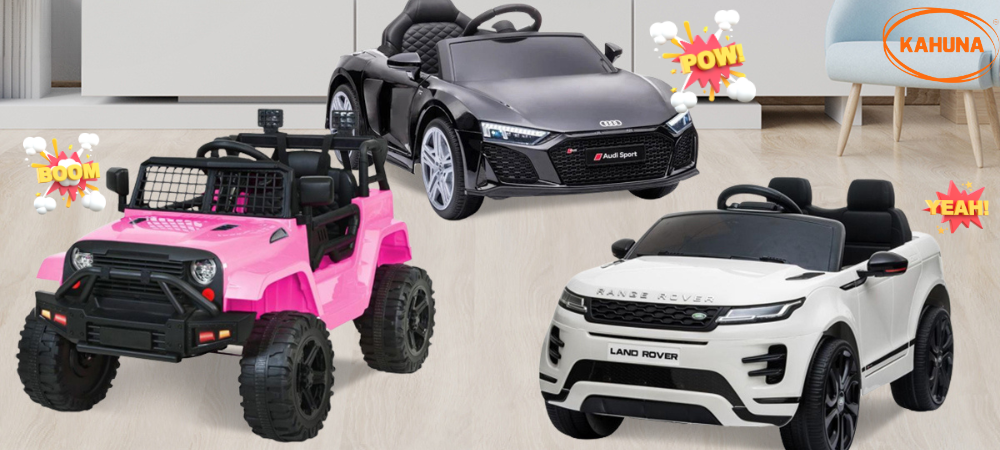
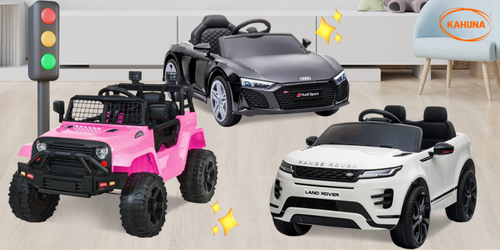
No comments
You have to log in in order to leave a comment.